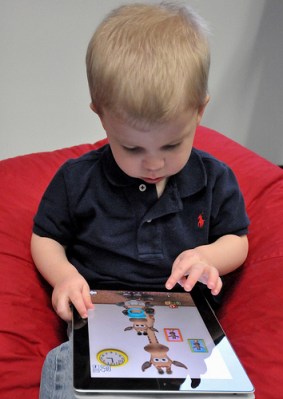Classrooms across the nation are adopting a new technology trend known as the “flipped” classroom, where students watch lecture videos as homework and teachers use class-time for discussion. First popularized by YouTtube sensation, Sal Khan, 3 years ago, the flipped model gained traction far faster than researchers had time to study it.
Now, a new multi-year study of the “flipped” classroom finds that allowing students to watch lectures at home boosts final scores a whopping 5.1%. I’m not being sarcastic; in education terms, that’s about as big as it gets, which is good news for professors thinking of ditching lectures in favor of hands-on learning in the classroom.
The findings, to be published in the Academic Medicine journal and The American Journal of Pharmaceutical Education, found that Pharmaceutical students who were taught with the flipped classroom model, rather than the in-class lecture model, did moderately better. As tablets become increasingly common in higher ed, more and more professors are opting to let students watch lectures at home–learning at their own pace–and saving class time for dialog and interactive projects.
If 5% doesn’t sound like a lot of improvement, prepare to be disappointed: researchers rarely find anything bigger. I collected every quality piece of research from 1980, related to how high school preparation impacts college performance (in the same subject). The average impact of taking a year of any high school subject is around 2-4% on the final grade in college (out of 100).
Public policy research tank, MDRC, finds that as students age, the effect of any change in education (an “intervention”) shrinks dramatically. The average Intervention for a first grader can bring a failing student in the 27th percentile into the middle of the pack. 10 years later, the average intervention has half the effect. By senior year, it’s expected that students won’t budge more than 6-percentile points.
About the age when a child’s voice stops cracking, education itself has a relatively mild effect on academic success. IQ, good parenting, and personal motivation are by far the most important factors.
Indeed, a recent National Science Foundation report of an online experiment at San Jose State University revealed that student effort was a key variable.
At least in its current form, education doesn’t work wonders. We don’t know how to turn every student into an Einstein–we only know how help students get a few more right answers on a test. Most of a student’s destiny is completely outside of a teacher’s control. Within the realm of possibilities, the flipped classroom is a big success. Education itself, however, has less impact.
